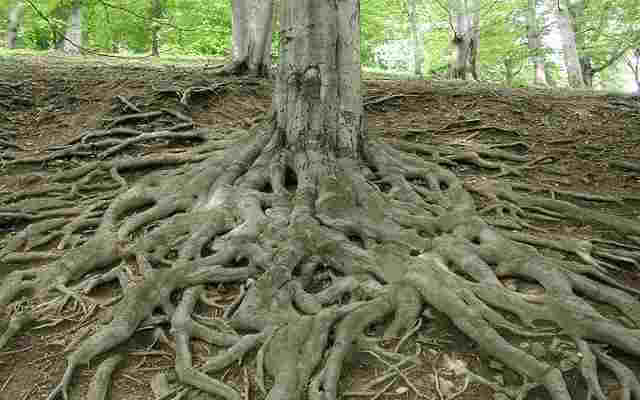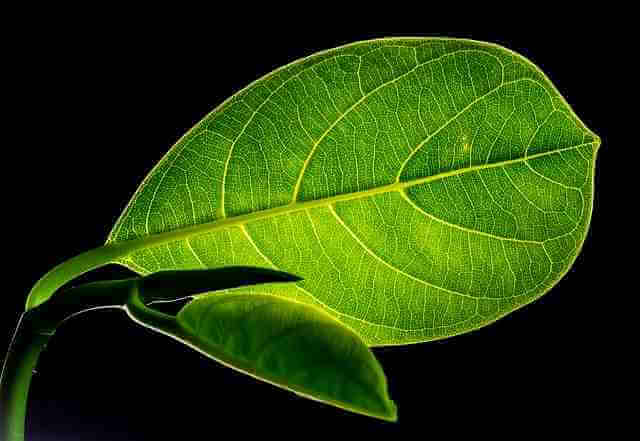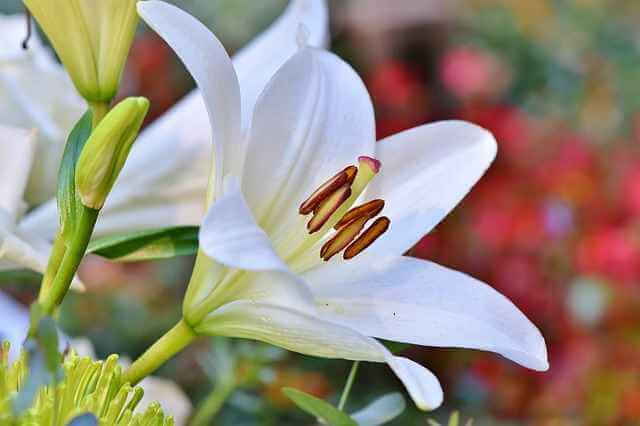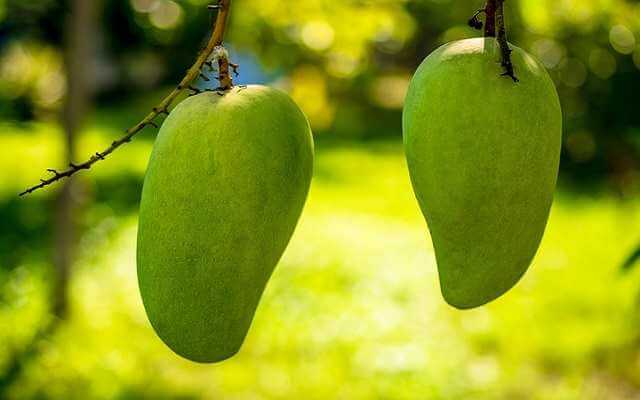Plant Morphology is the study of the Parts of a Plant. These parts are Root, Shoot, Leaf, Flower & Fruit in flowering plants. Here we are going to discuss the morphology of root, stem, leaves, flowers and fruits. modifications, types, parts and functions of plant parts.
Morphology is the study of forms, structure and relative position of the different organ of plants
Parts of a Flowering Plant
Every flowering plant consists of 5 parts
- The Root system
- The Shoot system
- Leaf system
- Flower
- Fruits
1. Parts of a Flowering Plant: The Root
The root is the descending portion of the plant axis. The root is positively geotropic and negatively phototropic structure of a plant. The root is a non-green structure which doesn’t have chlorophyll in normal cases. It is brown in colour

The root does not take part in the photosynthesis process in general. The root does not bear nodes, internodes, leaves and true buds. Lateral roots arise from the root which are endogenous in origin.
i) Parts of the root
- Root cap region
- Region of the meristematic zone (region of cell formation)
- Region of cell elongation
- Region of cell differentiation (Root Hair Zone)
ii) Types of root
- Tap Root: Taproot is the primary root which develops from the illusion of the radical of the embryo. It persists throughout the life of the plant. These roots are mostly seen in Dicot plants
- Adventitious Root: Roots develops from any part of the plant body other than the radicle. It is mostly seen in monocot plants such as green grasses.
iii) Modification of Tap Roots
1. Storage roots
- Conical- carrot
- Fusiform- radish
- Napiform- beet
- Tuberous- mirabilis Jalapa
2. Branched roots
- Nodular roots- Gram
- Pneumatophores- Rhizophora
3. For Physiological or vital functions
- Storage roots
- Tuberous roots
- Fasciculated roots
- Nodulose roots
- Moniliform
- Palmate tuberous root
- Annulated roots
- Parasitic roots- Cuscuta
- Saprophytic routes – Monotropa
- Reproductive roots – sweet potato
- Photosynthetic roots- Trapa
4. For mechanical support
- Stilt roots- Sugarcane
- Prop roots- Banyan tree
- Buttress roots- Terminalia
- Climbing roots- Vanilla plant
- Floating roots- Jussiaea
- Contractile roots- Allium
- Root Thorns- Acanthorhiza
2. Parts of a Flowering Plant: The Stem
A Stem Develops From The Plumule of The Germinating Seed of a Plant. Mostly it is the aerial Part of the Plant Body which Bears branches, leaves, flowers and fruits on it.

The stem is an ascending erect structure which grows away from the soil towards the light. It is negatively geotropic and positively phototropic structure of the plant. For growth, the stem bears a terminal bud on its apex.
The stem is differentiated into nodes and internodes in case of flowering plants. The point llof stem, where leaves are attached to the stem is called the node. Internode is the portion of the stem between the two nodes of the plant.
Leaves and branches of the stem are exogenous in origin. The young stem is green and photosynthetic structure. Hairs are multicellular if present.
i) Diverse Forms of Stem
- Reduced stems– Wolffia
- Erect stems- the majority of angiosperms
- Weak stems– Twiners, climbers, linas, trailers creepers
ii) Modifications of Stem
- Underground stem – sucker, stem tuber, rhizome, Corm and bulb
- Aerial stem– tendrils, stem Thorns, Phylloclades, Cladodes & thalamus
3. Parts of a Flowering Plant: The Leaf
The leaf is an important part of a plant which is responsible for photosynthesis in most of the plants. The leaf is a green, thin, flat expanded lateral appendages of the stem. it is born at a node and bear a bud in its axil.

Leaf develops from the leaf primordium of shoot Apex. It is exogenous in origin. The green colour of the leaf is due to the presence of a photosynthetic pigment called chlorophyll. The Green photosynthetic Leaves are collectively called foliage.
It is a lateral dissimilar appendage of the stem which always born at the node of a stem. Growth of leaves is limited. Apical bud is absent in leaves.
Parts of a Typical leaf
- Hypopodium– this is the base of the leaf. It is the lowermost part of the leaf which attached to the node.
- Petiole– this is the stalk of a leaf. It is cylindrical or subcylindrical in structure. It connect the lamina to the base. Leaf with a petiole is called petiolate but where petiole is absent the leaf is called sessile.
- Lamina– lamina is the green expanded portion of the leaf which is responsible for photosynthesis. Lamina also perform the vital functions of transpiration.
4. Parts of a Flowering Plant: The Flower
The flower is a modified shoot which is meant for sexual reproduction. The flower is present in only angiosperms plants. Bract, thalamus, perianth, calyx, corolla, androecium and gynoecium are important parts of a typical flower.

If a flower has stalk it is known as pedicellate. If there is no stalk, the flower is termed as a sessile flower. The flower is called complete if it bears all the floral parts and incomplete when one or more floral parts are absent.
The flowers are called bisexual if they bear both androecium and gynoecium. both types of flowers are present in Hibiscus Rosa Sinensis. This types of flower are also known as bisexual flowers. The unisexual flowers may be male flowers or female flowers. The male flowers are called staminate flowers because they have stamens only. the female flowers have only the carpels so it is called pistillate flowers. Those flowers which have Astral sex organs are called neutral flowers.
5. Parts of a Flowering Plant: The Fruit
The fruit is fertilized ovary which is responsible for the formation of seed. The ovary develops into a fruit. The ovary wall at maturity forms the wall of the fruit which is known as pericarp.

Sometimes tepals, bracts, thalamus are also involved in the formation of fruit. Search fruits are called false fruits or pseudocarps.
The fate of various parts of the ovary during the formation of fruits
| SN | Part name | The fate of the Part |
| 1. | Ovary | Fruits |
| 2. | Ovary wall | Pericarp |
| 3. | Ovule | Seed |
| 4. | Funiculus | The stalks of the seed |
| 5. | Hilum | Hilum |
| 6. | Nucellus | Perisperm |
| 7. | Micropyle | Micropyle |
| 8. | Outer integument | Pesta |
| 9. | Inner integument | Tegmen |
Types of fruits
There are three types of fruits
1. Simple fruits-
Simple fruits are formed from mono or polycarpellary syncarpous ovary. Simple fruits may be fleshy or dry. simple fruits are further divided into two categories.
A) Simple dry fruits
- Dehiscent fruits – black gram, Calotropis, mustard, candytuft etc
- Indehiscent fruits – lotus, Oryza sativa, Tridax, cashew nut etc
- Shizocarpic fruits- Dalbergia sissoo, euphorbia, carrot etc
B) Simple fleshy fruits
- Drupe – Mango, coconut
- Berry- Tomato, banana
- Pepo- Cucurbita maxima
- Pome- Apple
2. Aggregate fruits
These fruits are formed from the polycarpellary apocarpous ovary. Each ripened is known as fruitlet. Example- custard apple
3. Compound fruits-
Multiple fruits develop from entire inflorescence is known as syconus or sorosis. Examples- mulberry, pineapple, Banyan Tree fruits etc
Related Articles
- Parthenocarpy: Definition, Types, Hormones, Advantages and Disadvantages
- Embryo Development in Plants: Embryogenesis in Plants | Embryogeny
- Endosperm: Types of Endosperm | Examples
- Download NCERT Books from official website
Here we have discussed “Parts of a Flowering Plant: The Root, Shoot, Leaf, Flower & Fruit” we hope you like this article. if you have any query or suggestion, please leave a comment on the email. or contact us from contact us page.
Follow our official groups on Telegram, Whatsapp and Facebook

